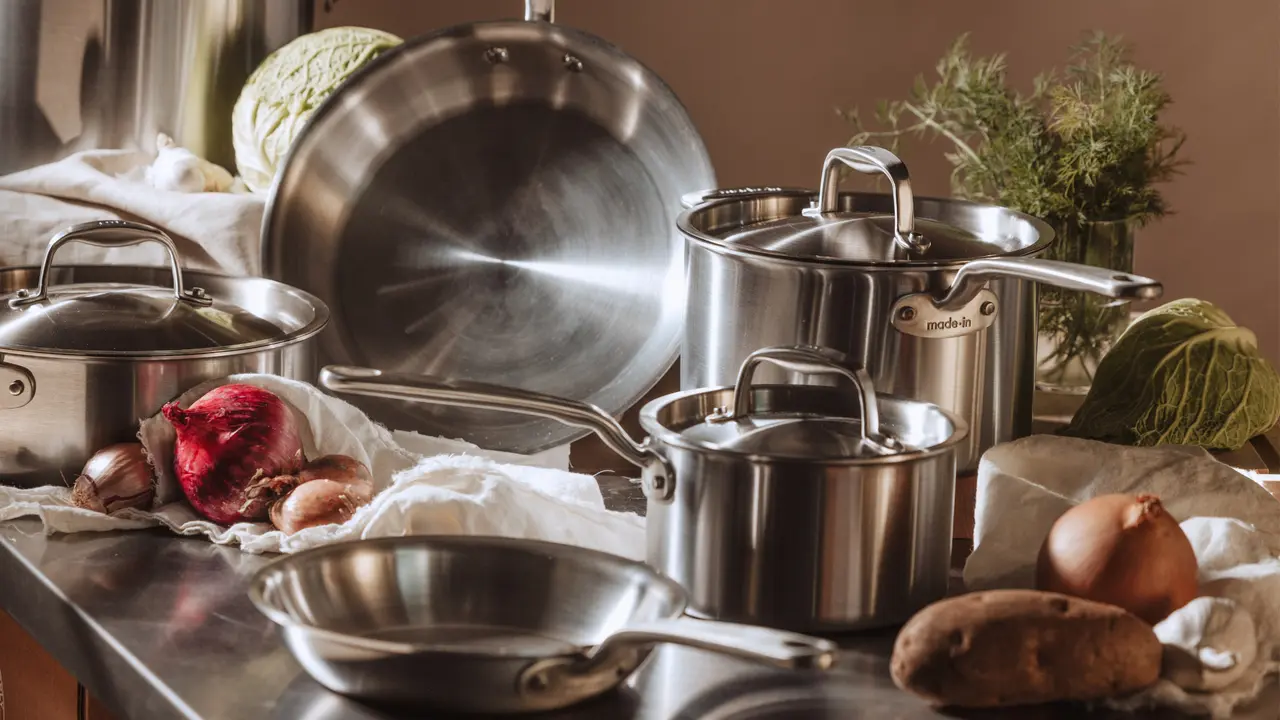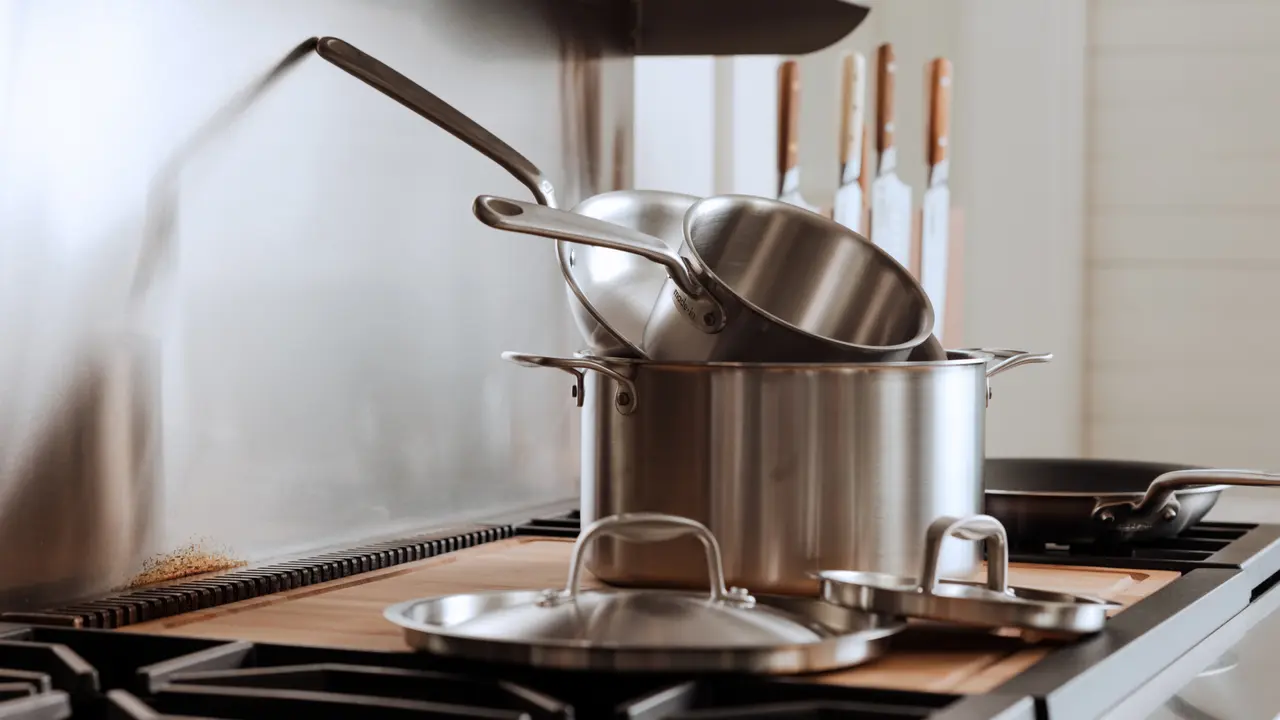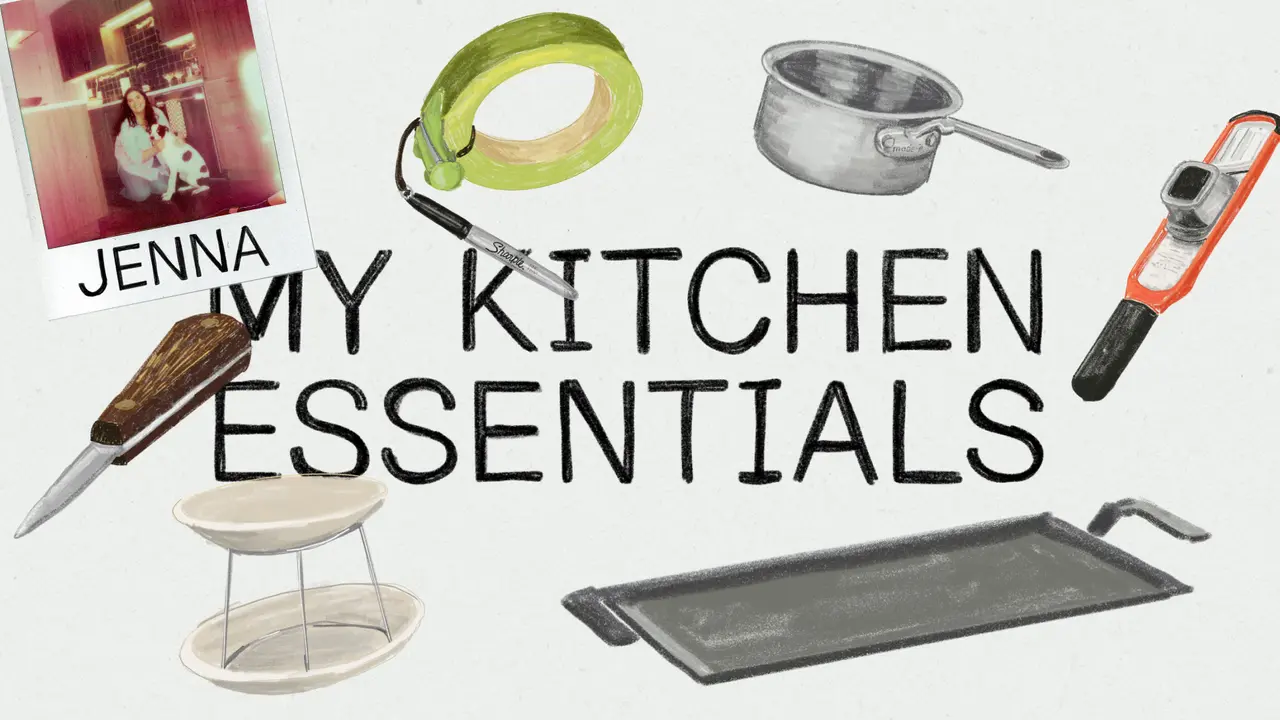Professional chefs are known to have their own quirky preferences when it comes to running a kitchen. Whether it’s knives, pans, spices or shoes, these choices are like a portal into each expert’s unique personality and cooking style. But put these preferences aside, and there’s no denying one universally popular accessory: the carbon steel skillet.
Although it’s not as prevalent in the average home kitchen, we are determined to change that. Carbon steel cookware is a staple in restaurants all across America (and indeed the world). Take a stroll down the aisles of Williams Sonoma, Sur La Table, Bed Bath & Beyond or any big box store, and you’ll see countless cookware options to choose from, including stainless steel, cast iron, aluminum, clay, copper, etc. So, why is it that nearly every serious chef chooses carbon steel over every other pan? What makes it so special?
The answer is relatively simple—and intriguing—when you consider all the details.
Cooking with Carbon
To start, carbon steel is exceedingly versatile, handling everything from delicate eggs and crepes to hearty steaks and potatoes (here are 7 great carbon steel recipes). As a surface material, it also accommodates high heat, which is an absolute must when you’re cooking meal after meal, night after night (or using a Wok for quick, hot cooking.)
If you’re looking to swap your old cast iron or ceramic-coated cookware set, consider the workhorse of every line cook in America. Made In has the rundown on all the riveting reasons why carbon steel is here to stay. Ready to be amazed?
Your Burning Carbon Steel Questions—Answered
What is a carbon steel pan made of?
While cast iron can have a frail, crumbly composition, carbon steel is definitely more durable, making it a highly attractive option for busy chefs. Its combination of 99% iron and 1% carbon creates an extremely durable surface that heats quickly and evenly. Known as an ‘alloy,’ this mixture also allows chefs to achieve and maintain super high temperatures without worrying about damage to the pan.
What can I use a carbon steel skillet for?
When we said carbon steel was versatile, we weren’t kidding. Carbon steel can literally do anything, which is a key reason why chefs have stopped collecting ‘one-use’ cookware pieces. Why clutter your cabinets when a single skillet can do it all? With a carbon steel frying pan, you can handle every major cooking method:
- Stovetop Cooking – eggs, potatoes, meat, poultry, fish, veggies
- Braising – stews, soups, barbecue meats, coq au vin, beef bourguignon
- Searing/Browning – steaks, pork chops, scallops, tuna, salmon, foie gras
- Sauté/Stir Frying – lo mein, fried rice, veggies, chicken and steak fajitas
- Oven Broiling – steaks, chicken, lamb chops, ribs, lobster tails
- Baking – cakes, casseroles, breads, pies, and other desserts
How did carbon steel get so popular?
In general, carbon steel has many of the same advantages (oven safe, long-lasting, high-heat) and disadvantages (prone to rusting, requires seasoning, hot handle) as cast iron. So, why is it that the pros tend to pick carbon steel? The fact is, professional kitchens have super powerful burners that are perpetually scorching. Although aluminum, stainless steel, and other popular materials conduct heat quickly, these metals perform poorly in high-pressure, high-volume situations. Likewise, cast iron can stand up to the sweltering temps, but it takes too long to initially conduct heat and does not respond well to changes in heat.
Carbon steel is the chef’s choice. Not only can these pans withstand heat, but they’re also relatively lightweight, making them easy to move, maneuver and carry. They also keep food warm in the pan while you’re waiting on side dishes and all the other time-consuming tasks that go into the dining experience.
Do carbon steel pans require a lot of maintenance?
The answer is ‘no,’ but let’s clarify. Similar to a cast iron skillet, carbon steel requires ‘seasoning’ to achieve a non stick like performance. While a standard cast iron pan may take multiple treatments to become truly ‘non stick,’ carbon steel requires just a little TLC.
Initial Seasoning – The pan comes with a layer of food-grade oil, which you should scrub away using a sponge and mild soap. After that, we recommend two simple options for seasoning. You can read the step by step process in our Carbon Steel Seasoning Guide or check out these videos to see just how easy it is:
Standard Cooktop Seasoning Method
Everyday Cleaning – After each use, clean the skillet with water and a sponge or soft-bristle brush, avoiding soap as much as possible. You can dry the pan by placing it back on a warm burner.
‘Seasoning’ Maintenance – Toss 1-2 teaspoons of oil in the skillet, spread around the entire surface, and soak up the excess with a paper towel. Heat the seasoned pan over a medium burner, and continue to wipe away oil as it beads. Once the skillet has begun to smoke for about 2 minutes, turn off and allow to cool. This process will keep carbon steel slick and can eventually lead to non stick capabilities.
Not sure when to reseason? Check out our article on what to look for and when to reseason your carbon steel.
Are there any downsides to carbon steel?
We believe that any negatives are far outweighed by the benefits of carbon steel. Still, let’s be real. Any pan made of carbon steel cannot be cleaned in the dishwasher, so you have to be willing to put in the work. By performing the basic maintenance described above, the pan will literally last forever. This is a refreshing quality given the limited lifespan of the majority of today’s popular cookware sets.
Also, chefs will tell you to be careful when cooking particularly acidic foods, such as tomatoes. A reaction with iron causes certain ingredients to discolor the pan, so do your homework in advance. The good news is, the more seasoned your skillet, the better it can resist citrusy foods. And if you do notice some of the seasoning strip away, you can always re-season your pan.
Finally, what will convince me to cook with carbon steel?
Once you go carbon steel, you never go back! Carbon steel cookware is lightweight, hard-wearing, and conducts heat faster and more evenly than pretty much any other similar material. It’s more versatile and easier to maneuver than cast iron, and way more durable than stainless steel, copper and regular ‘non stick.’
Classic and contemporary chefs (from Julia Child to Bobby Flay) swear by carbon steel. Its seasoning process is quick, painless and wildly effective, allowing the pan to naturally achieve non stick tendencies and keeping it at its incredible value—likely outlasting the kitchen itself. You can achieve everything from a beautiful brown sear on a steak to a light, fluffy scrambled egg. Craving a cake? Into the oven, it goes.
In closing, carbon steel is king when it comes to versatility. And cooking versatility is the Made In way!
Want to learn more about cooking with Carbon Steel? Check out Tom Colicchio use our Blue Carbon Steel while he teaches you how to Pan Roast Fish.
Can’t wait to get your hands on a carbon steel pan? Shop our Blue Carbon Steel Pan.





























